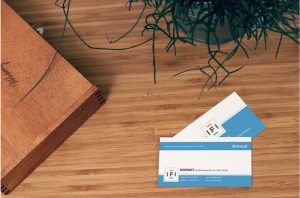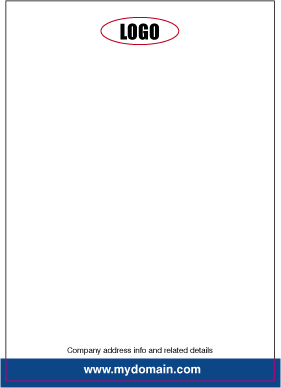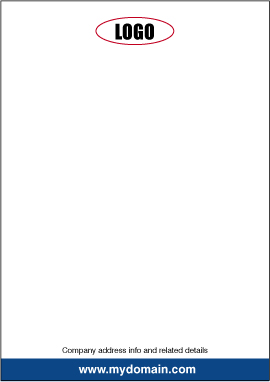There are two things that create legitimacy for your organization and everyone you meet (especially prospective clients): a letterhead of your organization and a business card. Even as we go digital, printed business stationery is more likely to get your brand noticed than anything else. When you give someone your business card, you are giving them a paper introduction to you and your company.
Having this little card creates an authenticity for your client, just because of the psychological value we place on paper. Not to mention, you are more likely to get a callback because all your contact information is packaged neatly in one place. One of the major arguments against business cards, however, is that it is easily disposed of when it takes up too much space in our wallets.
Surprisingly, this is not a failure of business cards, but of design. To really ensure your brand stands out in someone’s memory, you need a smart, minimalist card that draws their attention. There are plenty of imaginative cards out there: a divorce lawyer, for example, designed a business card that tears apart in two.
A horticulturist designed a card that has seeds in it that can grow! In fact, even beginners can design such minimal and effective cards.
To make custom prints, all you need is a Mac and good printers who will get the printed effects you need and you will have an effective business card!
Here’s how you can design your own card on Pages:
Beginners
-
- Pages is a design app compatible with a Mac. You are likely to have it pre-installed on your Mac. If not, you can download it for free from the App Store. Pages is especially user-friendly for beginners because it has pre-built templates for business cards that you can modify.
- Once it is installed, go to Files>New>Stationery. Here, choose Business Cards, to find a variety of business cards. They all have clean, minimalist design, which is the job half done. Click on the design you like to change and make custom prints.
- This will open up to a page filled with about ten identical business cards, which have editable fields for your company logo, your name, position, and contact details. To ensure uniformity in the editing process, open the alignment guides (Preferences>Rulers).
- To edit your text, double-click on the existing text, delete it and add new information. (if you want to add something more innovative, refer to the guide present later). You can then edit the size and font of each text field, using the toolbar present on your right. For clean, simple fonts, go with Garamond, Georgia or Odile. Remember: you can download the fonts you don’t have!
- To edit your logo, you will first need to have a .gif of your designed logo. If you do not have one, simply delete this pre-existing field. But if you do, drag it from its location onto your working page. Resize it, delete and replace the pre-existing logo with yours. You can even edit it slightly using the tools on the right; such as adding a square box or a shadow. Use your alignment rulers to ensure that the logo is exactly where you need it to be.
- Next comes the mundane part: the replication. An easy way of doing this is to press and hold the Option Key and to select the text and logo fields. Go to Arrange>Group. This will mean that you can copy and move around all the elements as a single floating field. Copy this grouped field. In the next card, delete all the elements present, and paste all the fields. Just make sure to maintain the correct alignment.
- After you have done this to all the cards, send it off for printing! You can have custom prints using innovative and different stationery material!
Intermediate
- If you are more comfortable with designing or want more freedom in your card design, Pages is an easy way to go. Typically, business cards are 3.5×2 inches, so plan your card keeping in mind that most wallets accommodate that size.
- On Pages, go to File>Page Setup, and choose the printing size of your paper. Make sure to consult with your printer to confirm that size is available. On this canvas, enable vertical and horizontal rulers, roughly the size of each card.
- Each divided box is your design area. You can add text boxes, images, or other innovative elements like redeemable coupon codes or discount barcodes that a potential client can use. Move these around to get the perfect card.
- Replicate each card in the way mentioned earlier, and send it off to your printers. Although this technique is more complicated; this allows you more freedom!
The Japanese—arguably one of the most professional and organized people in the world—highly prize business cards, and it is correct etiquette to exchange them when you meet someone. If you have a business, consider taking a leaf from their book, and like Japan, you may end prospering beyond belief!
Need a logo for your Business Cards? Then try this online logo maker.
Author’s Bio:
Jessica is a marketing enthusiast and an influencer in Fashion & FnB verticals. She keeps special interest in the impact of visual branding on business growth.
She has been writing for Stuart signstore, having a specialisation on T-shirt printing, for a long time now.






Leave a Reply